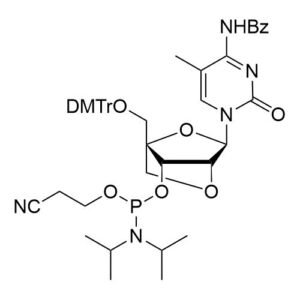Understanding Nucleic Acid Synthesis: Role, Process, and Technology

Nucleic acid synthesis is a fundamental process in molecular biology and biotechnology. It refers to the creation of nucleic acids—DNA and RNA—either naturally within living organisms or artificially through chemical and enzymatic methods. These nucleic acids play a crucial role in the storage and expression of genetic information, and they are essential for life itself.
In this article, we’ll explore the biosynthesis of nucleic acid, its importance in living organisms, the role of nucleic acid in protein synthesis, and the advanced tools like the nucleic acid synthesizer that have revolutionized modern science.
What is Nucleic Acid Synthesis?
Nucleic acid synthesis is the process by which DNA and RNA molecules are constructed from nucleotide building blocks. This can occur naturally within cells (biosynthesis) or artificially in laboratories using sophisticated equipment.
Naturally, nucleic acid synthesis is essential for cell replication, repair, and gene expression. In biotechnology and research, synthetic nucleic acids are widely used in diagnostics, therapeutics, and genetic engineering.
To learn more about available products and tools for nucleic acid synthesis, check out PharmaNanoAI's collection.
The Biosynthesis of Nucleic Acid
The biosynthesis of nucleic acid refers to the natural formation of DNA and RNA in living cells. This process is driven by enzymes that read existing DNA templates to create complementary DNA or RNA strands.
- DNA Biosynthesis: DNA synthesis, or replication, occurs before a cell divides. The enzyme DNA polymerase adds nucleotides to a new strand, using an existing DNA strand as a template. The result is two identical DNA molecules, each containing one original and one newly synthesized strand.
- RNA Biosynthesis: RNA synthesis, or transcription, is the process by which RNA is produced from a DNA template. The enzyme RNA polymerase reads the DNA and creates a complementary RNA strand. This RNA is later used in protein synthesis or other cellular functions.
The biosynthesis of nucleic acid is tightly regulated, ensuring accurate replication and transcription. Errors in this process can lead to genetic disorders or diseases like cancer.
Role of Nucleic Acid in Protein Synthesis
The importance of nucleic acid in protein synthesis cannot be overstated. Protein synthesis is a two-step process—transcription and translation—that heavily relies on both DNA and RNA.
- Transcription: DNA is transcribed into messenger RNA (mRNA), which carries the genetic instructions from the nucleus to the cytoplasm.
- Translation: The mRNA is then read by ribosomes, and transfer RNA (tRNA) brings amino acids to build the corresponding protein chain.
Thus, nucleic acids act as both the information carriers and the operational blueprint for producing proteins. Without them, the synthesis of proteins, which are vital for virtually all cellular functions, would not be possible.
Nucleic Acid Synthesizer: Revolutionizing Genetic Engineering
Modern research and medical diagnostics have greatly benefited from the invention of the nucleic acid synthesizer. This automated instrument chemically synthesizes DNA and RNA sequences in the lab.
How It Works:
A nucleic acid synthesizer assembles nucleotides one at a time onto a solid support. This chemical process allows scientists to create custom sequences with high precision, making it invaluable for:
- Gene editing (e.g., CRISPR applications)
- Synthetic biology
- Diagnostic assay development
- DNA-based vaccines and therapeutics
These synthesizers have shortened the time required to produce nucleic acids and increased the scalability of research and production processes.
For reliable nucleic acid synthesis tools and materials, explore PharmaNanoAI’s product category, which offers solutions tailored for research and industrial needs.
Applications of Nucleic Acid Synthesis
The ability to synthesize nucleic acids has opened doors to numerous scientific and medical advances:
- Medical diagnostics: Synthetic nucleic acids are used in PCR, DNA probes, and rapid testing kits.
- Drug development: Nucleic acid-based drugs like antisense oligonucleotides and mRNA vaccines have shown great promise.
- Agricultural biotechnology: Gene editing in crops to improve yield and resistance.
- Forensic science: DNA profiling for criminal investigations and identification.
Conclusion
Nucleic acid synthesis is a cornerstone of modern biology and biotechnology. From the biosynthesis of nucleic acid in living organisms to the role of nucleic acid in protein synthesis and the advent of high-precision nucleic acid synthesizer machines, this field has transformed how we approach health, science, and technology.
Whether you're a researcher, clinician, or biotech innovator, understanding nucleic acid synthesis is vital to unlocking the full potential of molecular science. Don’t forget to check out the latest tools and reagents at PharmaNanoAI’s nucleic acid synthesis section to power your next discovery.
- Questions and Answers
- Opinion
- Motivational and Inspiring Story
- Technology
- Live and Let live
- Focus
- Geopolitics
- Military-Arms/Equipment
- Sécurité
- Economy
- Beasts of Nations
- Machine Tools-The “Mother Industry”
- Art
- Causes
- Crafts
- Dance
- Drinks
- Film/Movie
- Fitness
- Food
- Jeux
- Gardening
- Health
- Domicile
- Literature
- Music
- Networking
- Autre
- Party
- Religion
- Shopping
- Sports
- Theater
- Health and Wellness
- News
- Culture

